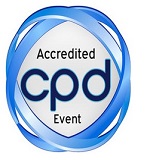
Tutsirai V Musingwini
University of Zimbabwe, Zimbabwe
Title: Title HIV Drug Resistance Mutations among Antiretroviral Drug-Naïve and Antiretroviral Drug -Experienced HIV-1-Infected Individuals in a Zimbabwean popullation
Biography
Biography: Tutsirai V Musingwini
Abstract
The use of antiretroviral therapy (ART) to suppress human immunodeficiency virus (HIV) replication has significantly reduced HIV/AIDS-related morbidity and mortality, but however, the effectiveness of ART has been threatened by emergence of drug resistance mutations. The objective of this study was to determine frequencies of HIV drug resistance mutations , using proviral DNA from blood specimens of treatment -experienced and treatment-naïve patients recruited from an HIV treatment clinic in Harare, Zimbabwe.103 participants were enrolled, 80% being female. 6 (6%) of these had at least one drug resistance mutation and were also treatment experienced. None of the treatment naïve patients (11%) had mutations. The mutations observed were; NRTI mutations M184V, T69D, T69N and V75I; NNRTI mutations , G190E, Y181C, , G190A and K103N, V108M; and thymidine analogue mutations (TAMs) D67N, K219Q, K70R L210W , and T215Y . The most frequently occurring mutation in the whole group of patients was the M184V mutation, which occurred in 5 of the 6(83%) participants. We demonstrated the use of proviral DNA in HIV drug resistance testing of treatment experienced and naïve patients, as well as its potential use in predicting treatment outcomes were viral load monitoring is not widely available, as reflected in routine clinical practice in this setting. This helps provide surveillance on risk of resistance in the population, and corrective action on current treatment regimens can be taken.

